
14 minute read
Thinking about your supply chain solutions
Paul Eastwood, CEO and Founder of Pollen Consulting Group
©stock.adobe.com/au/Kzenon
The world is changing at a pace like no other; supply chains are too.
Before you decide to change, check it has longevity and isn’t a knee-jerk reaction to a short-term spike.
Is this the future?
Holding more stock due to your long supply chain drives a bigger warehouse, but in the long term, is the better strategy to onshore or shorten the chain? Perhaps adopting technology to be smarter on replenishment and optimum stock levels is the solution.
Think carefully before laying down your footprint, as it’s pretty hard to unpick a 10-year lease. If you are planning short term, then get innovative with your solutions. Airbnb showed that we could use someone else’s space for a short-term solution; applying this concept in the warehouse world could be your answer.
If you are reading this as a business that has seen volume drop, consider that you may be the solution to your neighbour’s problem.
Start from perfect but recognise what is ‘good enough’
So, you are through the first hurdle, and it’s time to turn up the heat on your new supply chain. What should you do?
Firstly, remember that the word ‘chain’ is incredibly important. Every element is connected, and you cannot consider a section without considering the whole. Don’t be afraid to put costs in to take out greater costs.
Consider the costs of others; your suppliers, your customers and how you could put costs into your business that reduce costs or vice versa. A great example is stock; the best place to hold stock is as close to the customer as economically possible. We often see multiple stock locations that have buffer stocks just to ensure they replenish the next buffer.
Finally, start with perfect and work backwards. If you had a blank canvas and your volume tomorrow, what would you do? Once this is established, map the art of the possible in moving towards this.
Know your onions — my favourite English term
Use science, brains and logic. What you change now will be the solution for the future so consider the implications and risks on the changing world. Will your solutions be flexible in responding whilst being lean and a competitive advantage for tomorrow?
Automation is the future, but is it your tomorrow? If you are going to buy a fully automated solution, specification is critical. Under-spec it, and you risk buying a ‘dud’ from day one. Overspec it, and the business case might not stack up.
Most importantly, you might have over-capitalised. Most businesses, therefore, play too safe and overspend.
We have seen multi-million-dollar projects where the specification and design are based on a rudimental calculation to work out the depth of racking and the number of robots based on safe averages. That business now has an automated warehouse that is running at about 60% utilisation yet has some products that will not work and are stored in a 3PL. Be flexible in design.
Consider blending solutions and, most importantly, model your design using real numbers and proper maths. Using a digital twin and simulating the real-world volume and constraints will give you confidence before you sink $40m when $25m would do.
Gatekeeper turned poacher
Make sure the partners you choose are working in your best interests. Are they willing to advise the best solution, or are they incentivised on selling you the new and shiny? Build for what you need now and next, not for 10 years — no matter the cost reduction. Countless times we see businesses invest ‘now’, believing it will cost less in a fancy cashflow model; these are often built on either aspirational growth curves or, more importantly, because money is cheap.
What you do need to consider is futureproofing the growth opportunity.
Land is sensible, but an oversized shed or automation solution is not; these things are modular and can easily be extended. Deploying capital now that doesn’t start payback until year five is just silly. Think about deploying that capital on a payback three-year project that starts tomorrow and by the time you get to year five, you will have raised the cash entirely to fund that extension — basically for free, even if it costs 20% premium.
Pollen Consulting Group www.pollenconsultinggroup.com
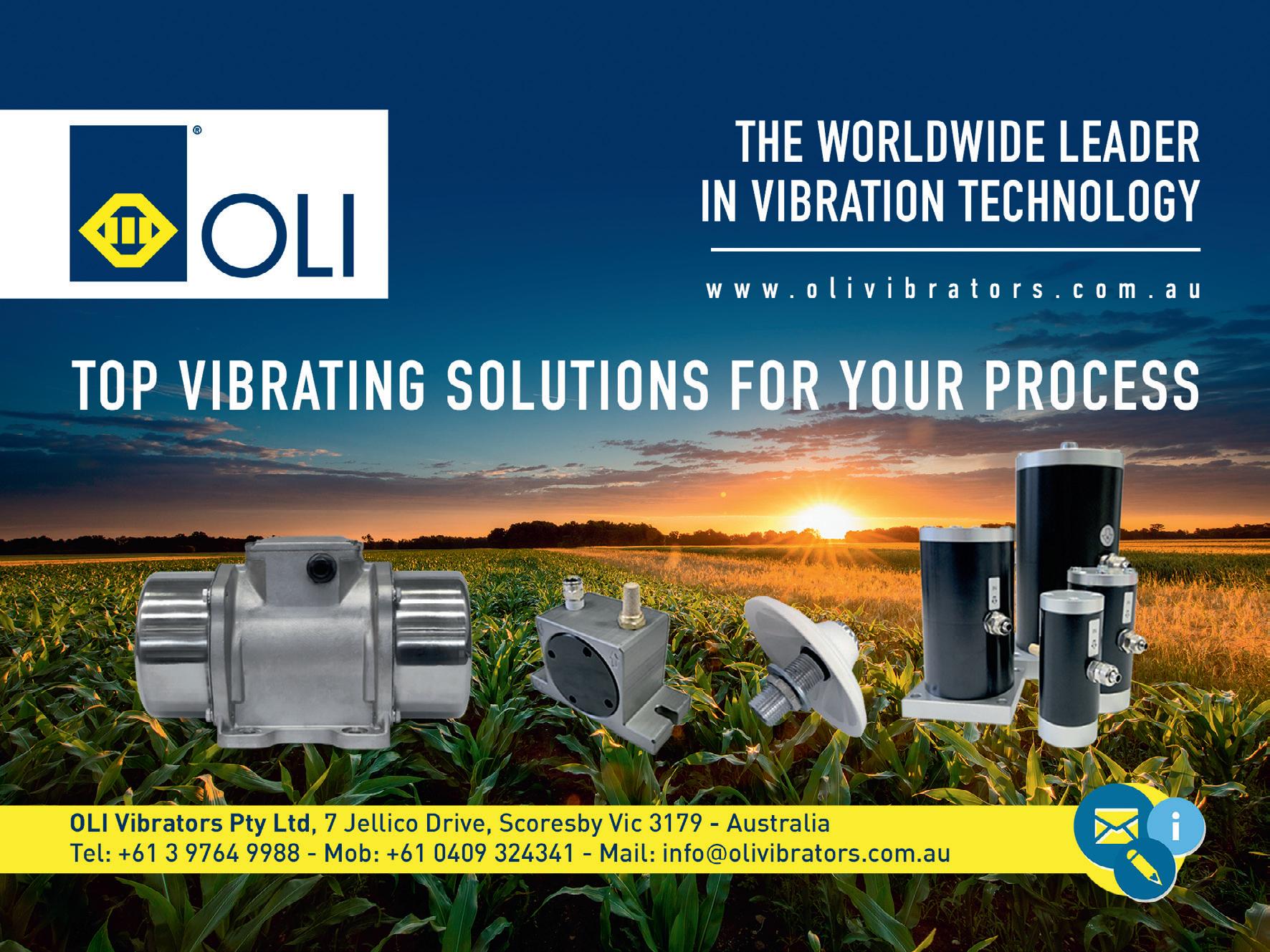
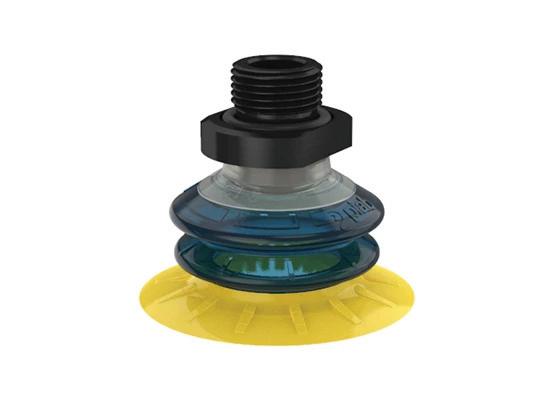
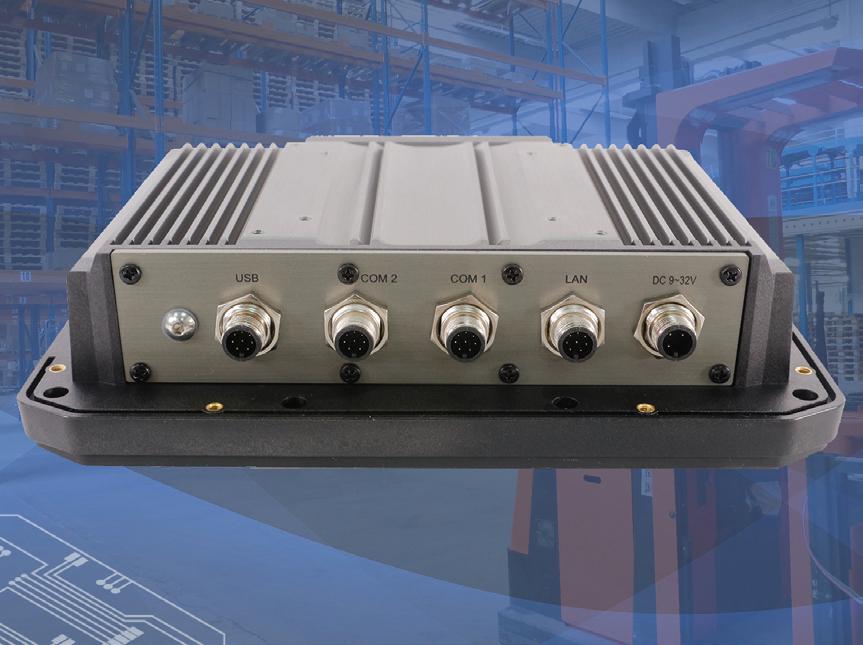
In-vehicle panel PC
Aplex’s APC-3072 in-vehicle panel PC series is powered by Intel Celeron N2930 and Freescale i.MX6 processors. It features a rugged but also lightweight construction design and various mounting ways so that it can be installed on engineering vehicles and forklifts for a variety of warehouse environment applications.
The product offers a wide operating temperature and a sunlightreadable solution for semi-outdoor applications. It is equipped with IP66 and M12 connectors which can be connected to I/O ports and cables to protect the panel PC from dust and water ingress.
The panel comes with wireless connectivity, including Wi-Fi, Bluetooth, LTE network functions and so on. Data can be transmitted in real time for tracking inventories, allowing for increased operation accuracy. The GPS can also track the location of forklifts to help manage vehicles in the field.
To decrease the damage from the computer suddenly shutting down, ACC control features the function of power on/off delay to prevent hardware damage and software crash.
Backplane Systems Technology Pty Ltd
www.backplane.com.au
Suction end effector range
The Piab MX suction cups end effector range is designed for industrial robots.
The suction cups can pick up various objects primarily for the logistics, warehousing, e-commerce and recycling industries. They can work across multiple applications such as bin picking, order fulfilment, box depalletising and parcel sorting.
The multi-purpose, energy-efficient suction cup has good gripping capabilities on many surfaces and materials. It has the ability to create a hard seal when using a low-vacuum flow, which contributes to a more sustainable energy output.
Available in five sizes: 35, 42, 50, 57 and 65 mm in diameter, the suction cups are compatible with Piab’s piGRIP fitting program, allowing for fitting options tailored to application needs. For extra safety and robustness, users can opt for aluminium clamp fittings.
The device is suitable for handling pouches, cardboard boxes, recycled objects and difficult-to-grasp bags, such as thin bags, and more.
Piab
www.piab.com
Contact tracing device
Contact Harald is a contact tracing solution designed to allow a business to quickly manage infections and prevent a full business closure if a staff member becomes unwell. The technology is suitable for facilities, such as meat processing facilities and abattoirs, that want to ensure employees are tested for COVID-19 regardless of whether they show symptoms.
Using wearable, standalone card technology and operating on low-energy Bluetooth technology, Contact Harald can be used to manage staff’s health by recording card-to-card interactions within a defined facility.
The technology can determine when two people have been in close proximity of each other within certain set time limits, allowing for easier, faster detection.
Should an individual become unwell, the data stored on the card issued to them while onsite is flagged within the system, automatically matching data to other cards active in the worksite active at the same time.
This allows businesses to manage potential health risks and immediately identify and alert staff to take swift action to isolate, get tested and better manage the health of their own immediate contacts outside of the business.
According to the company, confidentiality was a key focus in the development of the card technology and to ensure privacy, no personal information is stored on a card.
Contact Harald
www.contactharald.com
Independent cart technology —
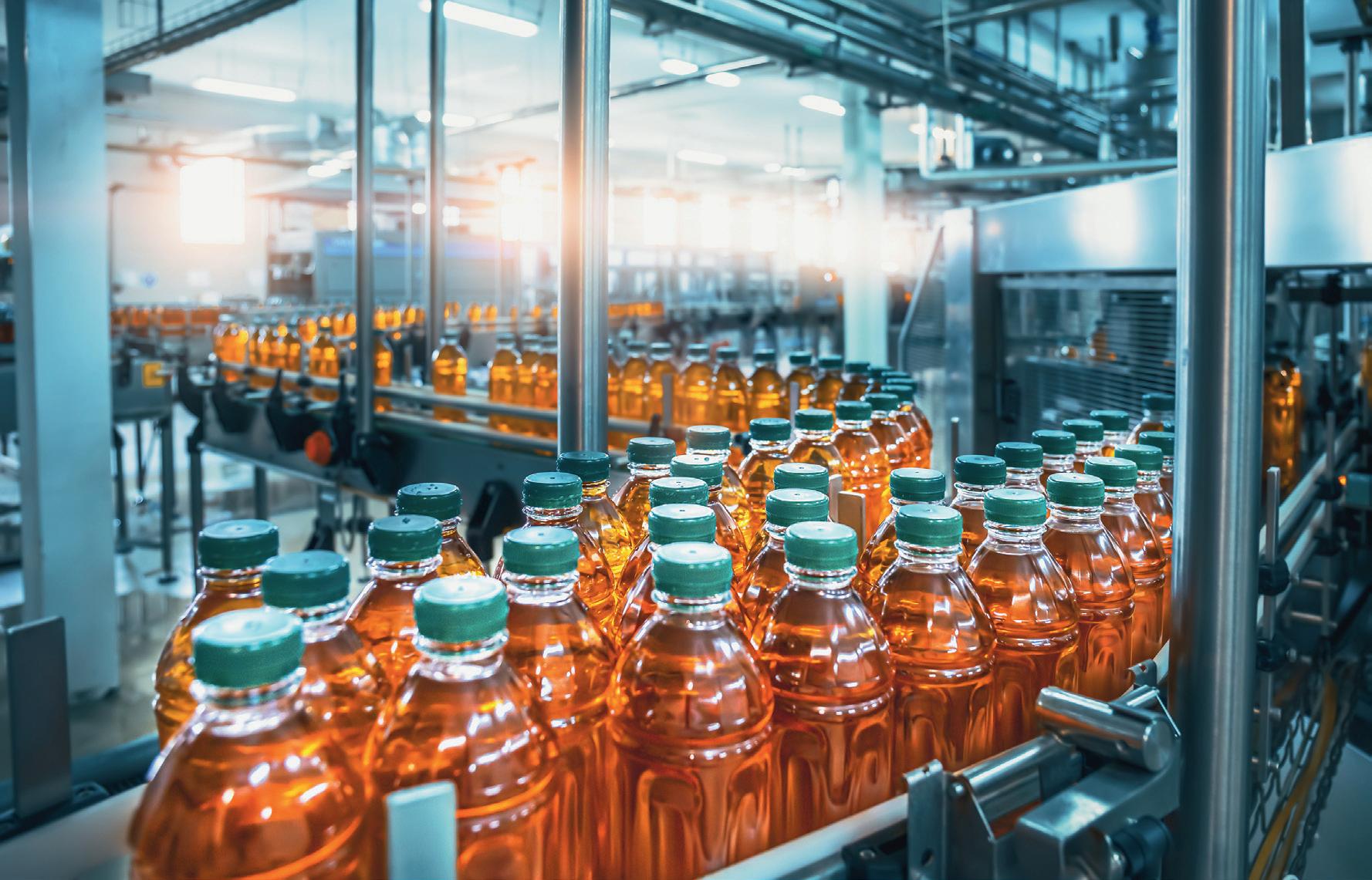
Flexible design and quick change
© Stock.Adobe.com/au/Dmitry Volochek
Independent cart technology is a new approach to linear motors. Traditional conveyors rely on gears, chains and belts. Independent cart technology uses magnets to precisely control motion with frictionless propulsion! The result is fewer parts to worry about, reduced energy consumption and the ability to quickly start and stop loads without losing control or putting wear on parts.
Our curved or straight sections of track can be combined in endless combinations to suit your design and space requirements. Once built, changeovers can be as simple as selecting a different software-configured move profile.
Each cart in the system is its own intelligently controlled axis of motion. That means that the carts can speed up or slow down based on where other carts are in the system. The system also tracks what each cart is moving, so there’s no need to slow down for sortation. Resulting in fewer bottlenecks and increased output.
All our motors and carts are IP65-rated or higher and modular, which makes them a great choice for a wide range of applications. They can be purchased as a customised, fully assembled unit, as individual components or as a mix of custom and standard parts.
High level control options
iTRAK
With iTRAK, each cart is an axis of motion, enabling high level control that allows every cart to be synchronised to an external axis such as a robot or a cam. A benefit of this approach is that each cart can be individually controlled to be in a specific location on the track at a specified time at all times. This not only enables camming to an external system or device, but also enables adjacent carts to change their relative spacing in a coordinated manner to support folding or compacting type applications.
MagneMotion
MagneMotion’s high-level control system also supports axis-based cart motion using our SYNC-enabled motors and Allen-Bradley® ControlLogix® controllers and motion profiles. MagneMotion also provides a ‘fire and forget’ mode, ideal for complex tracks having multiple lanes and topologies where carts need to move from one station or location to the next. The control system manages the paths and flow of carts to avoid collisions. The ability to merge both operating modes provides maximum flexibility to minimise the customer’s PLC host interface. The definitive solution for diverse sectors
Independent cart technology offers flexibility, scalability, and ease of use, and also minimises power draw compared to conventional conveyor systems since only those coils required to support cart motion are powered. Factory automation applications using belt and chain conveyor systems, hydraulic actuators, and lead screw drives are a few examples where linear motors could produce the required action, serving as an alternative to these mechanically dependent devices.
These are five sectors where linear motor technology is proving to make a definable difference: 1. Life sciences 2. Consumer packaged goods 3. Food and beverage 4. Household & personal care 5. Material handling
For more information, visit https://www. rockwellautomation.com/en-au/products/ hardware/independent-cart-technology.html
Rockwell Automation Australia www.rockwellautomation.com/en-au

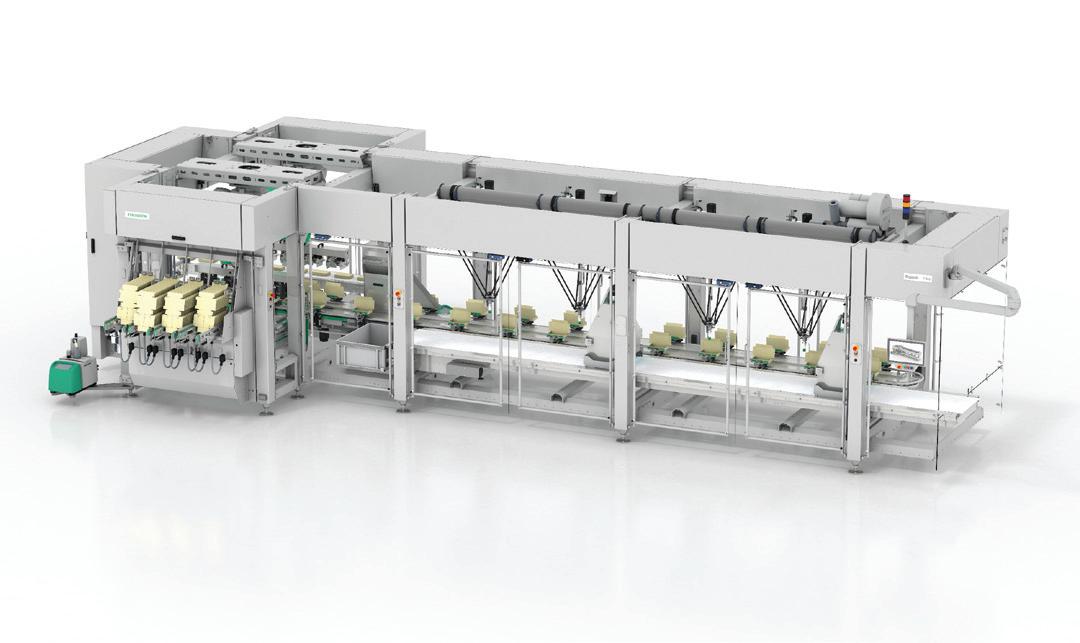
Robotic cartoner
Syntegon has expanded its secondary packaging portfolio with the Sigpack TTMD. The machine combines core technologies of the TTM platform with one or more seamlessly integrated Delta robot cells.
The machine’s camera-based vision control system detects products on the infeed belt. The delta robots pick single or multiple products arriving in random order and place them in cartons, trays or other containers according to specifications. To enable additional packaging flexibility, the topload cartoner can also simultaneously pack different products from several infeed processes. It uses the tool-less format changeover concept from the TTM platform, enabling a vertical restart after each format change.
Each cartoning machine can be equipped with one or more Delta robot cells. A camera-based vision system detects the position of the individual products on the infeed belt. The pick rate of the delta robots depends much on the product. Typically it’s between 60 and 90 products/min and can go up to as many as 120 products/min.
Following the single- or multi-pick process, the robotic arms pick the products from the belt and place them in the cartons either in a flat or onedge position. The process is organised according to the counterflow principle: the cartons move in the opposite direction to the product. This reduces the reject rate and makes sure that each carton is filled correctly. The Delta robots can track on the infeed conveyor and the carton transport, which allows the products to be continuously loaded into the cartons.
The Sigpack TTMD consists of a TTM1 or TTM2 topload cartoner for forming and closing. It has a maximum output rate of 150 cartons/min.
Since products from several process sources can be fed into the TTMD, a selection of different products, such as small bags containing different snacks, can be packed into one carton.
Syntegon Technology Singapore Pte. Ltd
www.syntegon.com
Ingredient batching controls
Sterling Systems & Controls has introduced its automation application module for the batching of solids and liquids, such as for ingredient batching in feed, recipe batching in baking and food, and many other industrial applications.
Batching systems are known as micro, minor, major and bulk systems. The Sterling Systems BatchPro-SA batching automation and control application is designed to eliminate error, ensure lot and material traceability, and optimise throughput and profitability.
Remote supervisory control using another software app, WebCentral from Sterling Systems, allows for easyto-use, browser-based operation; report generation and exporting of data to integrate with corporate ERP systems is available.
Safety of animal feed, pet food and foodstuffs for human consumption is of paramount importance and ingredient material traceability with simple-to-comprehensive lot tracking tools and batch validation will help users meet safety standards and requirements (barcode and RFID scanning systems can be provided).
Sterling Systems and Controls Inc
www.sterlingcontrols.com
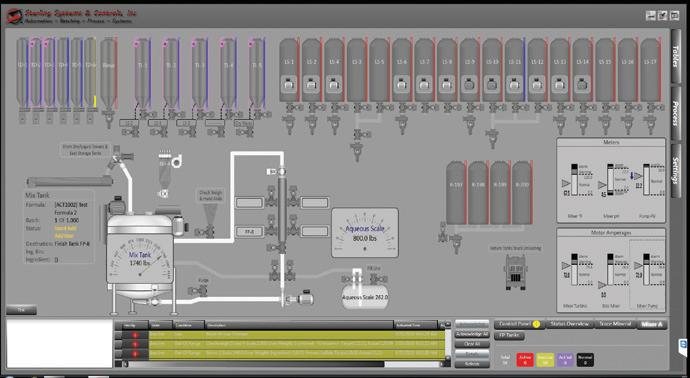

Industrial smart glove
Thread In Motion’s Glogi smart glove is developed to serve the logistics processes of all sectors, especially operations such as warehouse, goods entry-exit, goods counting, cross-docking, picking and sorting.
The glove recognises products and locations with its camera and barcode reader enabling employees to perform error-free transactions with haptic feedback mechanisms.
Working hands-free, integrated with warehouse management and monitoring systems, the product can help to speed up operations.
It is designed to make business processes more ergonomic, faster and traceable with lower error rate.
Thread In Motion
www.threadinmotion.com
CASE STUDY Meat facility rebuild
Thomas Foods International (TFI) is set to deploy the Dematic Multishuttle Meat Buffer and Pallet Automated Storage and Retrieval System (AS/RS) at its new meat processing facility in Murray Bridge, South Australia.
After its original processing plant in Murray Bridge was destroyed by fire in 2018, TFI made a commitment to rebuild the plant “bigger, better and stronger”. Located just 8 km from the original site, the new flagship facility, currently under construction, will offer a futureproof, fully optimised supply chain to service local and global demand for decades to come.
As part of its plans to build the new facility to the highest industry standards in technology, efficiency, animal welfare, worker safety and environmental sustainability, TFI has partnered with Dematic to deploy its Multishuttle Meat Buffer and Pallet AS/RS. The automated solution is designed to streamline operations and facilitate the start of an advanced, self-sufficient local supply chain.
“Our new Murray Bridge facility has been designed with a focus on efficiency and sustainability of which Dematic’s advanced automation technology is a key component,” said Nekta Nicolaou, Group Engineering Manager at TFI.
With its capabilities to accommodate the meat industry — operating in both frozen and chilled environments — the Dematic Multishuttle Meat Buffer and AS/RS allows for the transfer of product cartons between aisles without the use of a traditional conveyor system, which is designed to increase overall flexibility and system throughput within the facility.
“With the current flood of demand for local product, this solution will improve Thomas Foods International’s in-house operations by providing a high-performance order fulfilment and despatch processing system,” said Soeren Schauki, Business Development Manager at Dematic. “Even after the devastation of losing its previous facility, Thomas Foods International’s ambition to transform the new facility has positioned them as a leader for innovation in the industry, now with a self-sufficient, sustainable and resilient supply chain.”
Construction and commissioning of the first stage of the new plant is expected to be a 24-month process with the build reaching completion in late 2022. Dematic Pty Ltd www.dematic.com.au
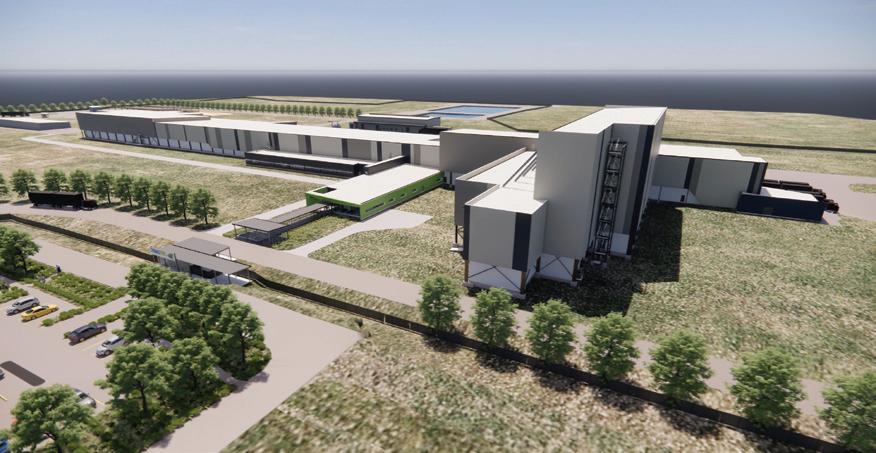
NEWARRIVALSINTRODUCING THE NEW RANGE OF
MLA Vulcan Pedestrian Equipment


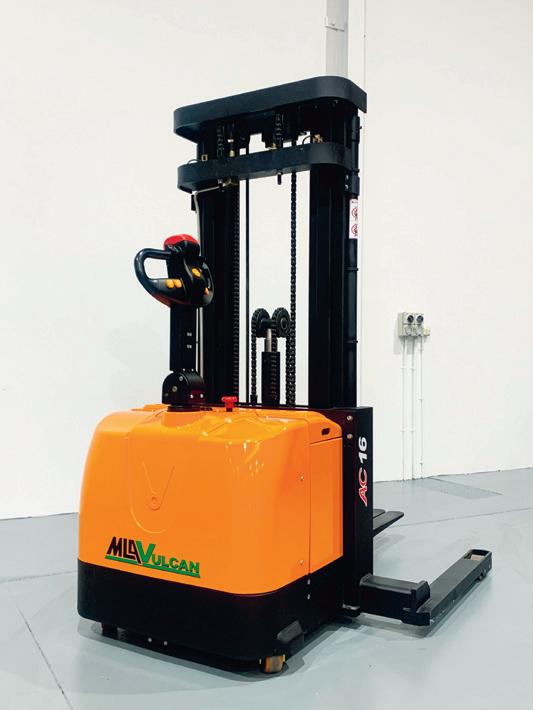
Power Pallet Mover $5,990+GST Walkie Reach Stacker $19,990+GST Walkie Straddle Stacker $11,990+GST
RENT OR BUY NOW!
1300 000 6 5 2










